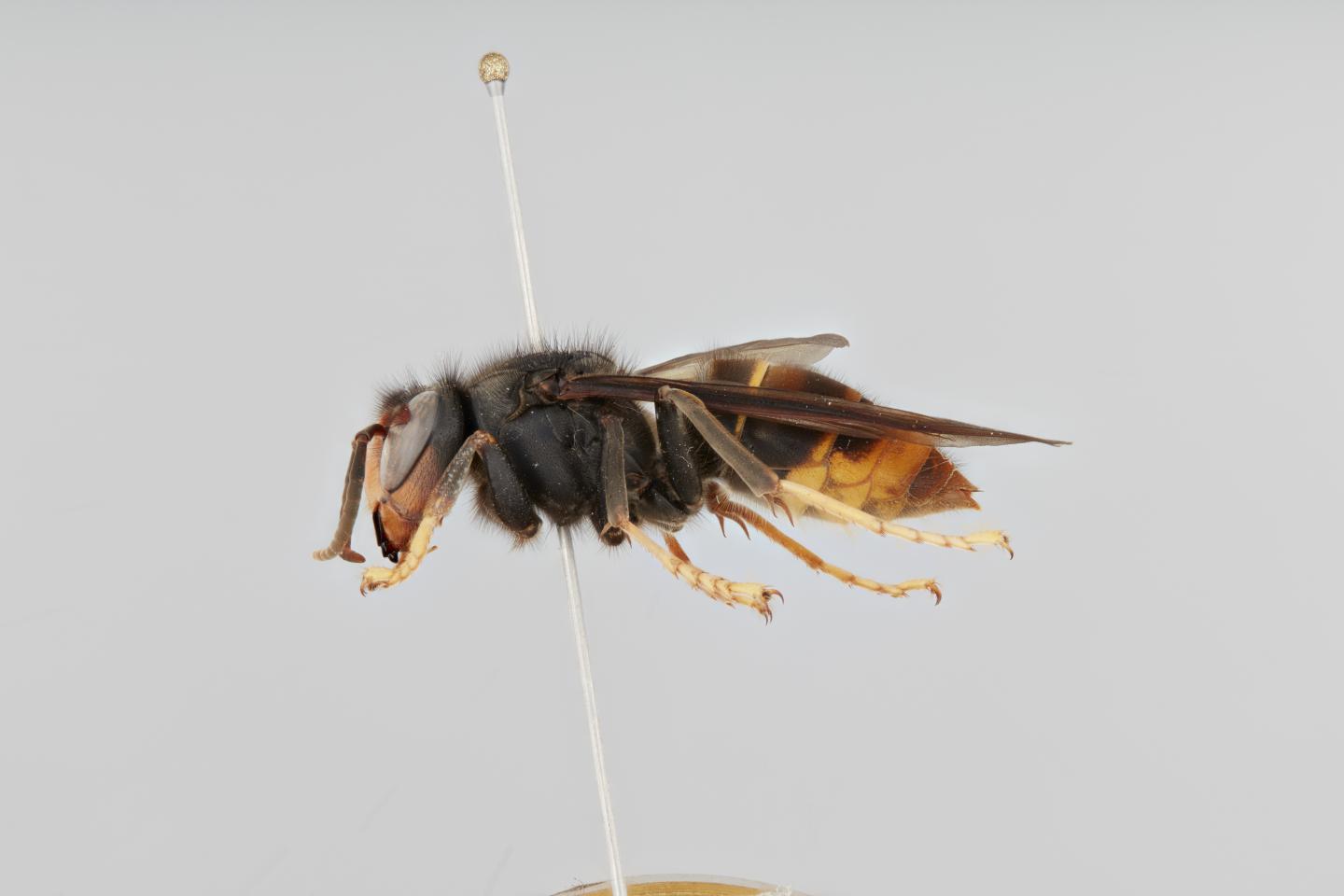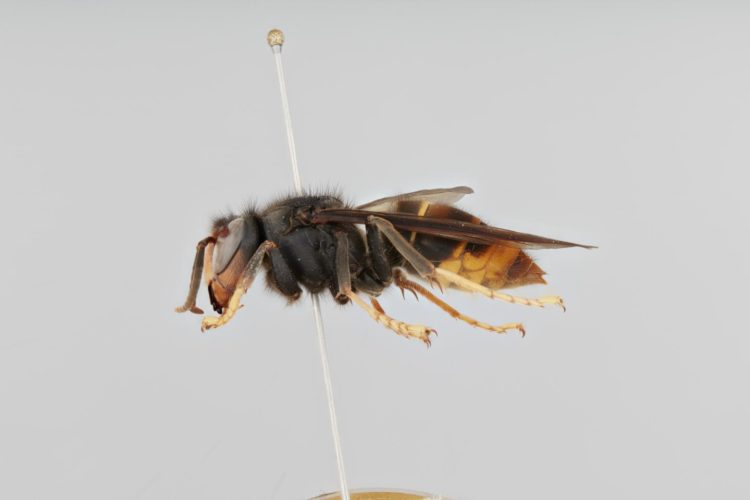
Credit: Mr. Martin Husemann
In early September 2019, an Asian hornet (Vespa velutina nigrithorax) was collected alive in Hamburg, Germany, representing the northernmost find of the species so far in Europe and indicating its further spread to the north. The paper by the research group from Hamburg, which also serves to update the occurrence of the dangerous invader, was published in the open access journal Evolutionary Systematics.
Known to prey on many insects, including honey bees and other beneficiary species, the Asian hornet, which had already invaded parts of Southern and Central Europe, is a potential threat to apiculture and even to ecosystems.
The first specimen was captured in south-western France in 2005 and started to spread quickly. Over the next years, it invaded large parts of France and regions of Spain, Portugal, Belgium, Italy, the Netherlands, Great Britain and south-western parts of Germany. The estimated invasion speed for France has been estimated at around 78 km/year, but in reality, the species spread might be occurring much faster due to anthropogenic factors.
It’s not yet clear if the collected Asian hornet belonged to an already settled population or it’s rather the first record of a new invasion. Nevertheless, considering the fast invasion speed of the species and its relatively high climatic tolerance, it’s quite possible that it had reached Hamburg on natural routes and now reproduces there.
Even though other models suggest that the Hamburg area is not suitable for the species today, the new find might be a sign that the Asian hornet has begun spreading at a speed above that previously known and even in climatically less favourable regions.
“Therefore, the current find needs to be taken seriously, no matter if it is only a single specimen or a member of an established population”, shares the lead researcher Martin Husemann from Centrum für Naturkunde, University of Hamburg.
Invasive species are one of the great challenges in the modern world. Their occurrence can be considered as one of the key important ecological and evolutionary drivers.
###
Original source:
Husemann M, Sterr A, Maack S, Abraham R (2020) The northernmost record of the Asian hornet Vespa velutina nigrithorax (Hymenoptera, Vespidae). Evolutionary Systematics 4(1): 1-4. https:/
Media Contact
Martin Husemann
[email protected]
Related Journal Article
http://dx.





